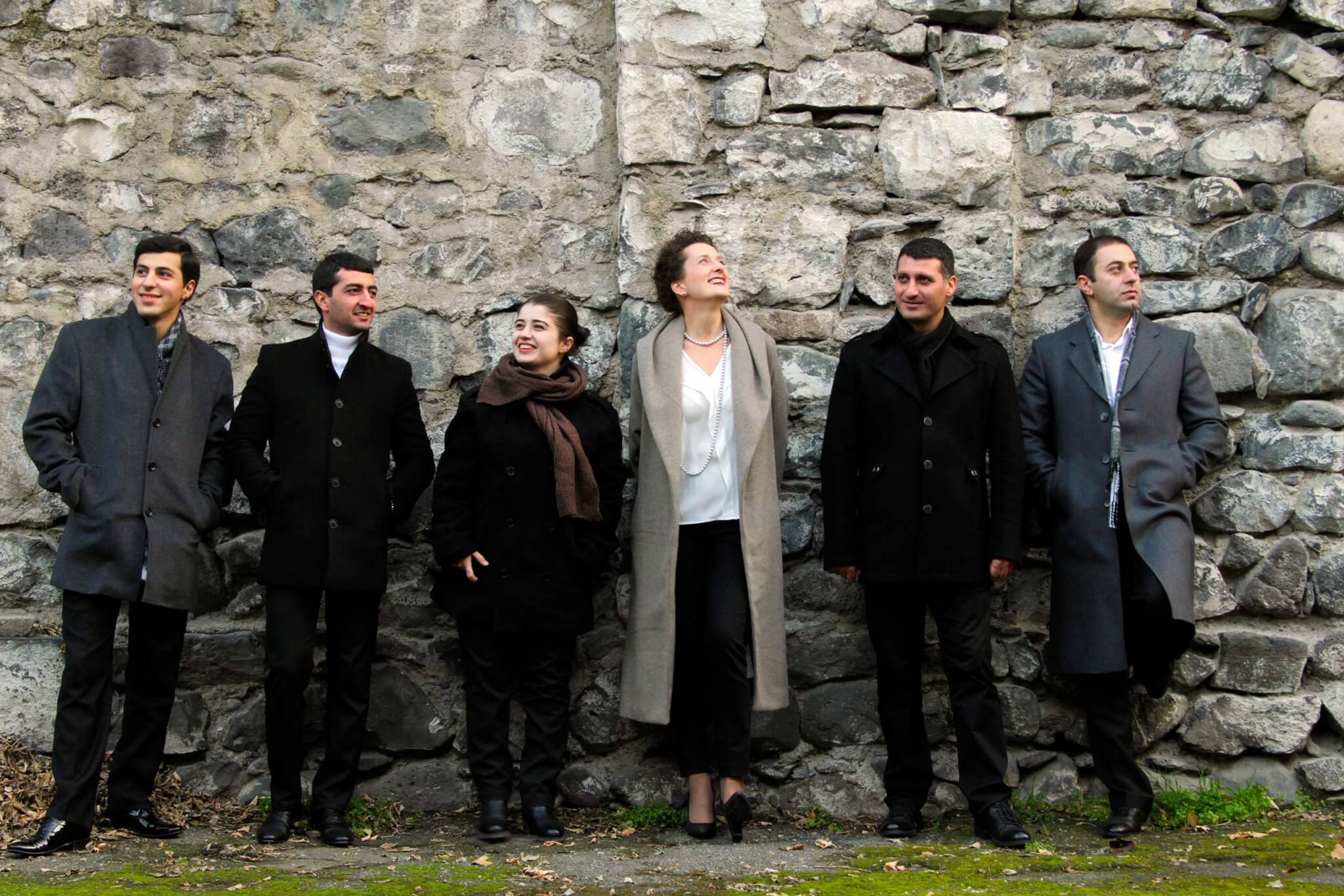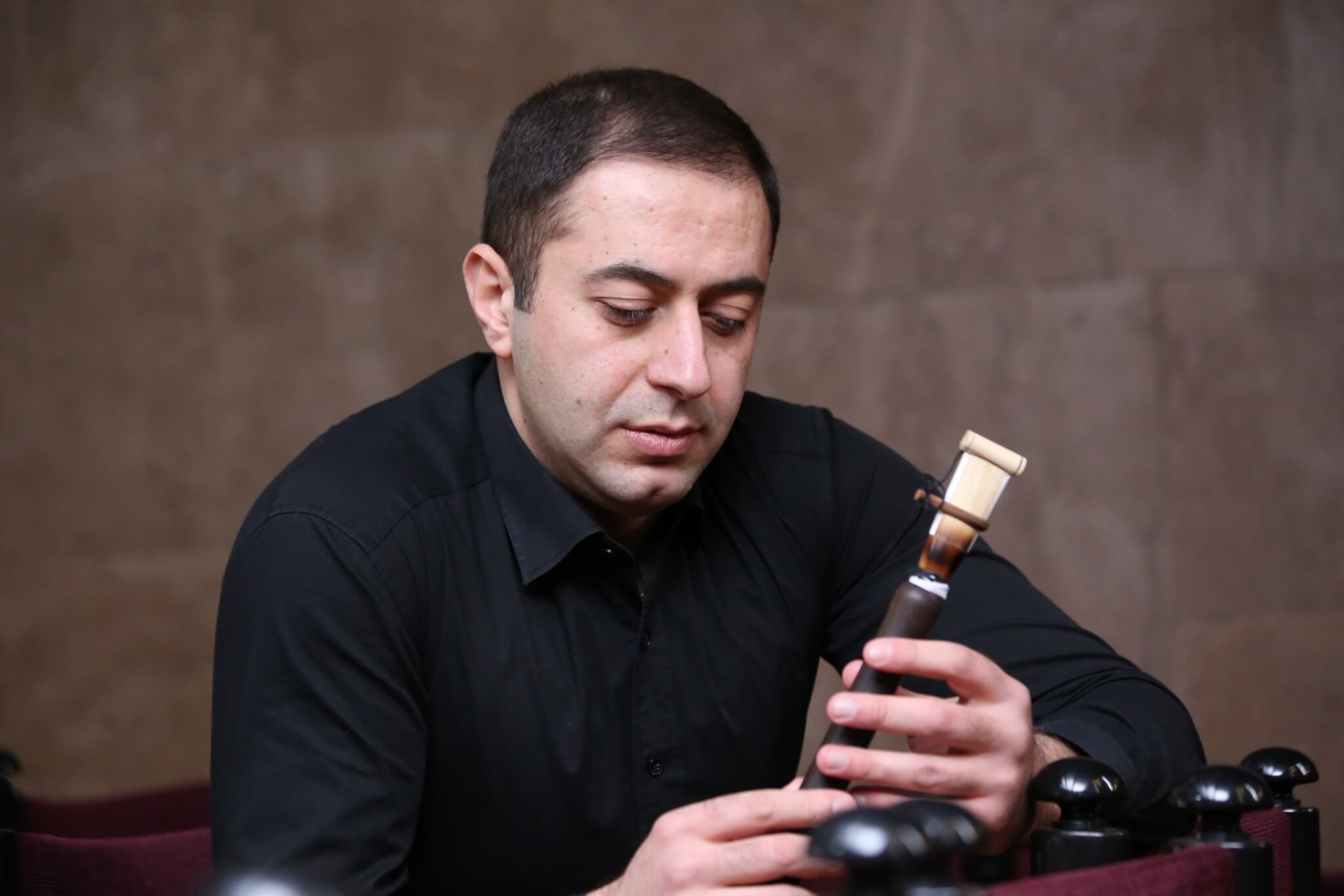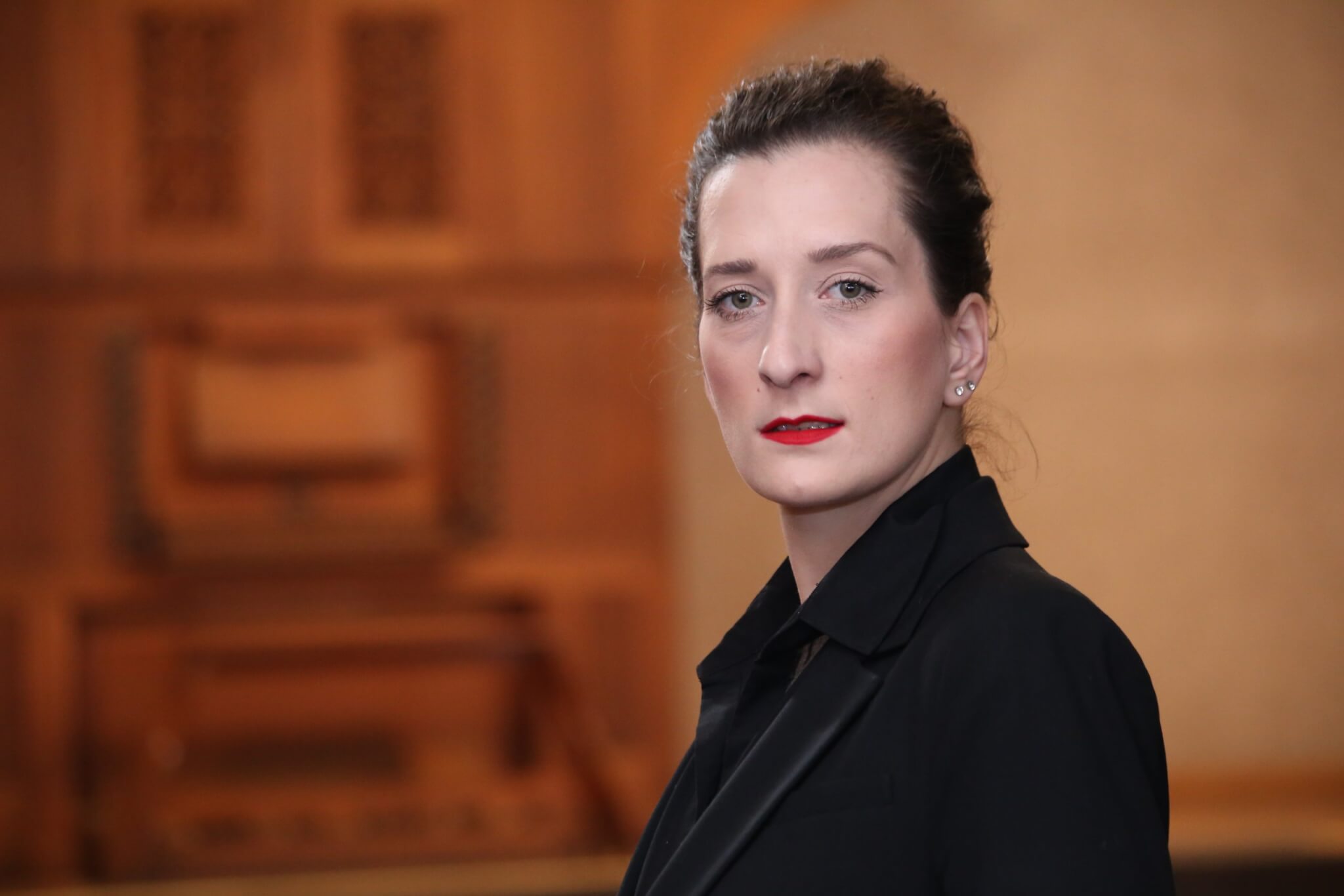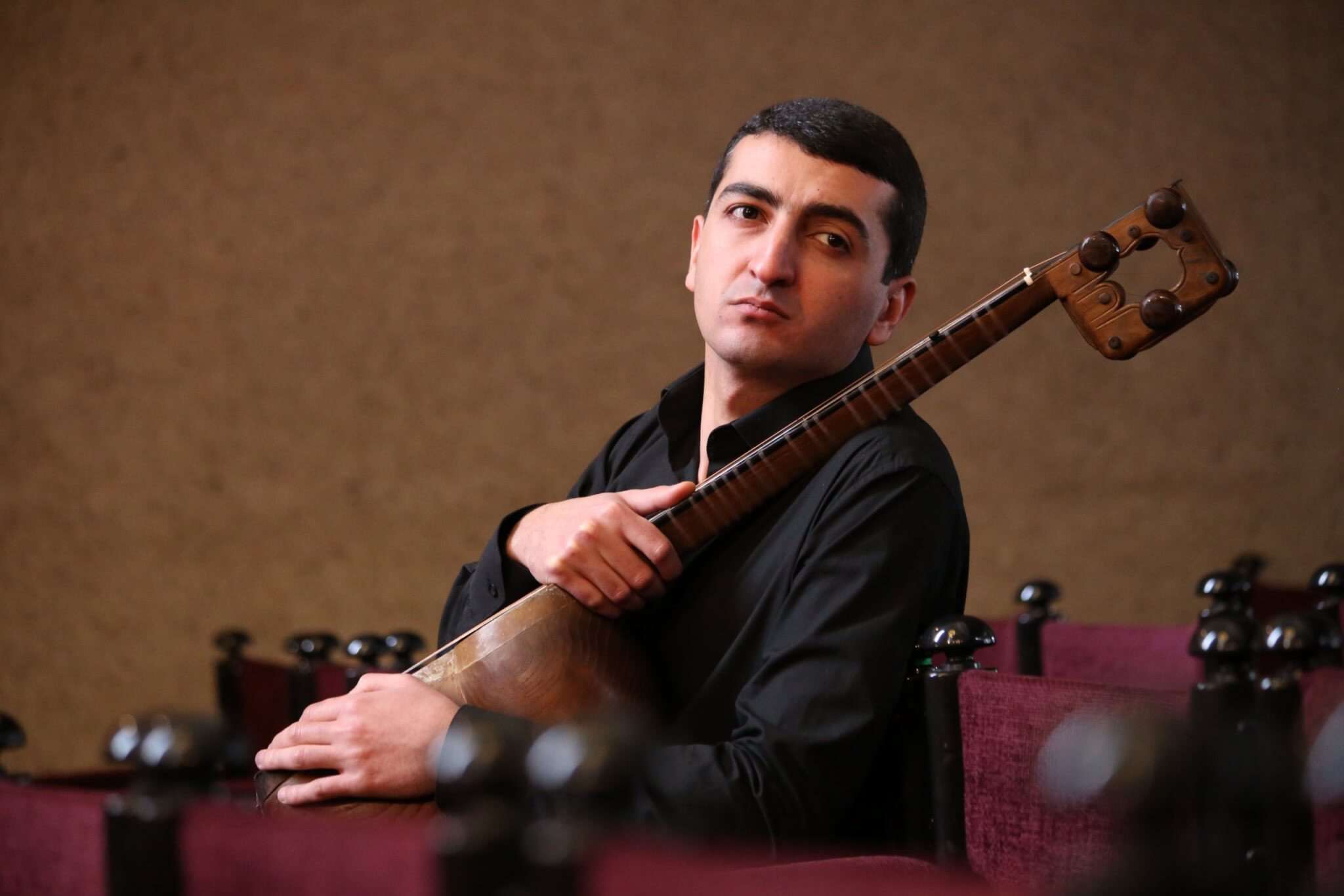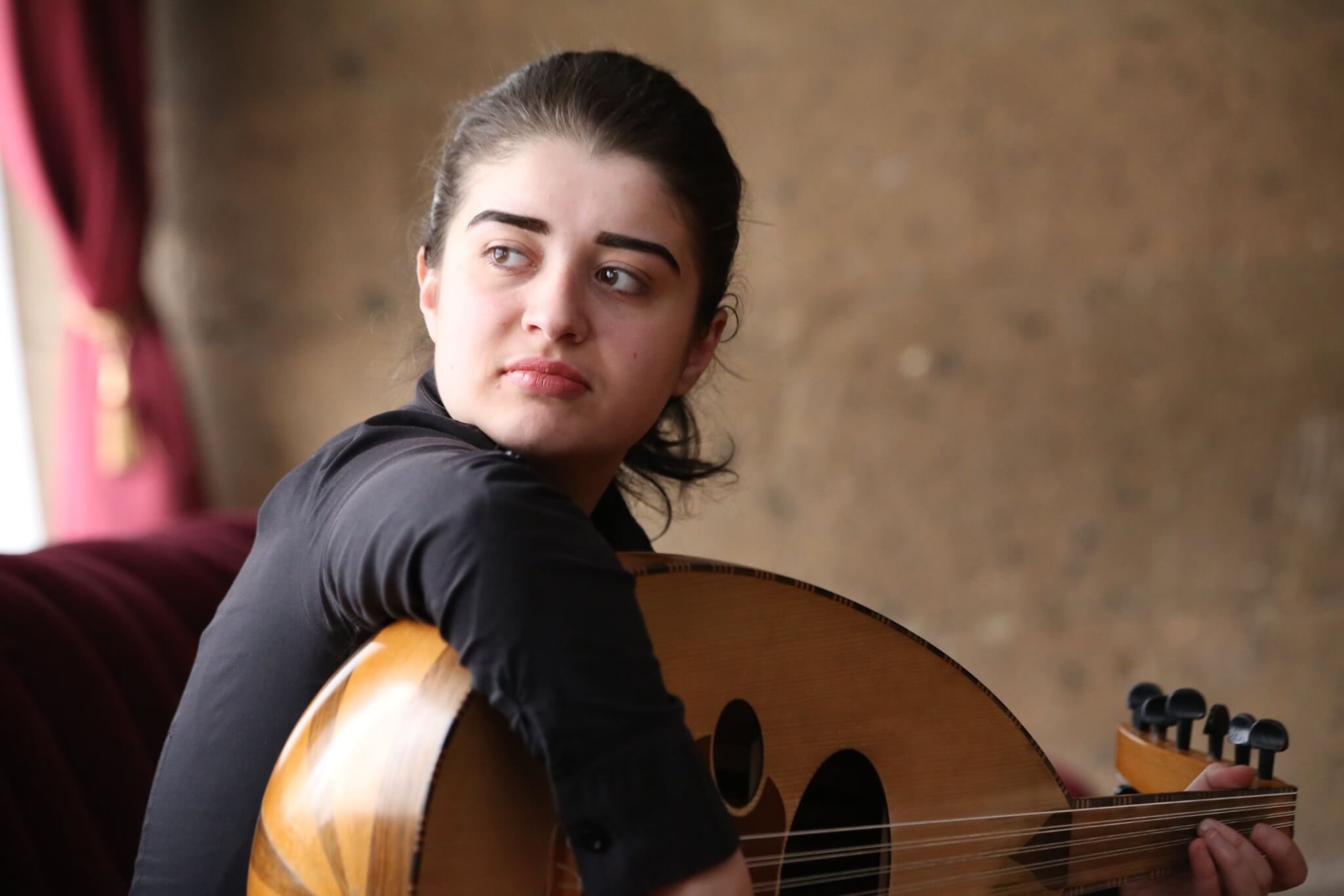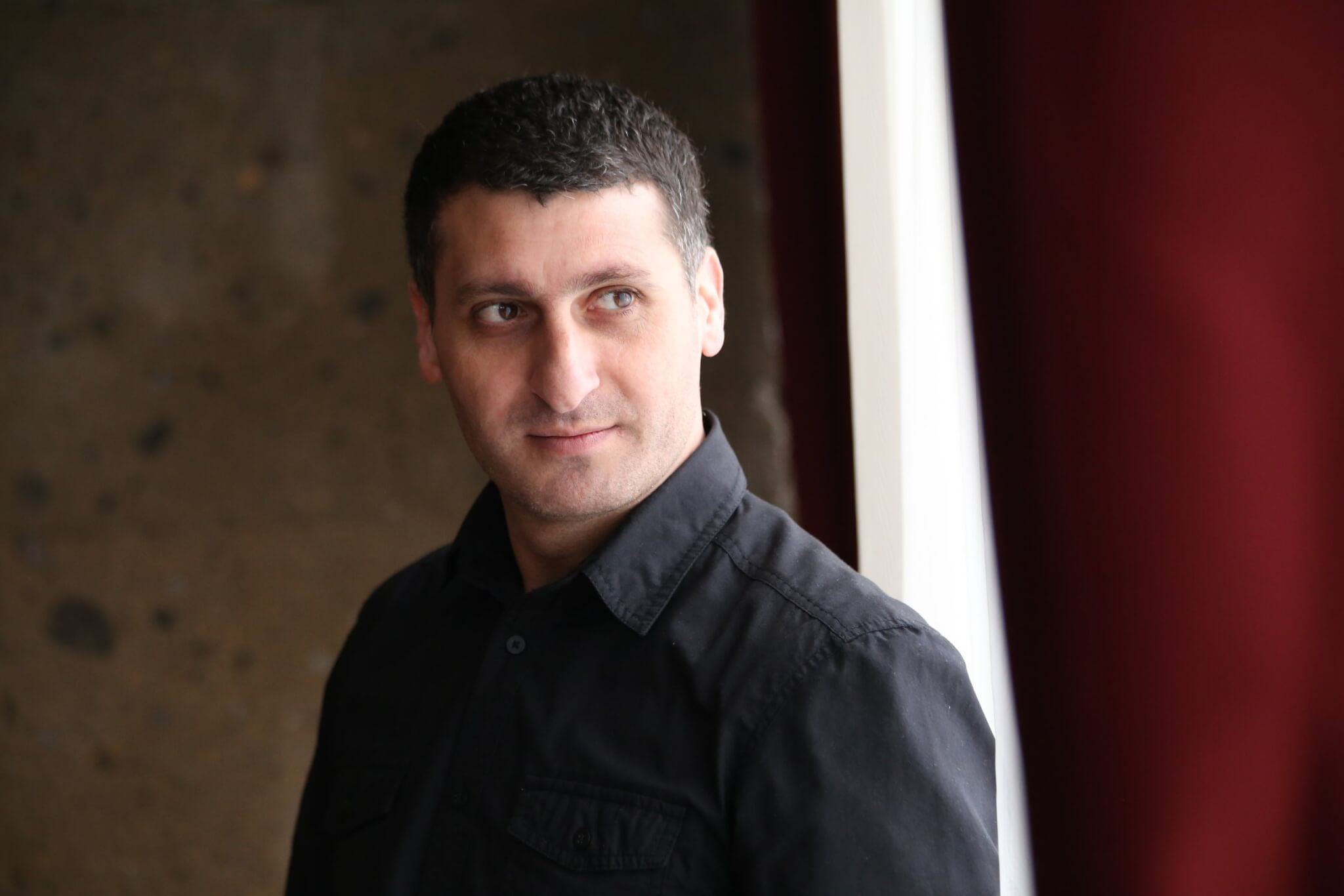Tsirani Ensemble
Traditional Music Ensemble|www.tsirani.com
The Tsirani Ensemble are six award-winning musicians, sharing the musical heritage of Armenia with the world. Their repertoire is a journey into the traditional musical heritage of their home country: Komitasian songs /art and medieval, spiritual, folk and minstrel music of different times and regions of Armenia.
In beautiful unique and modern interpretations, the ensemble joyfully revives the national historic music of Armenia on five traditional instruments: Georgy Minasyan – duduk (Armenian double-reed woodwind) & shvi (flute), Mariam Mirzoyan – oud (short neck pear-shaped, fretless string instrument), Gor Ghalmukhian – dhol (double-headed drum), Davit Avagyan – tar (long necked lute-type string instrument), the soprano singer Eka Horstka and Artak Asatryan – solo duduk and artistic director.
The ensemble is very modern in its way of interpretation. It could be loved and embraced by European audiences as well.
With their colorful repertoire spanning from the diverse Armenian folk music styles to verses of the medieval ages and music of the poet/musician “troubadour” Ashik, the Tsirani Ensemble is presenting different periods and perspectives of the rich heritage of music and literature of Armenia through the “easy language of music” and make it accessible and enjoyable to broader audiences as well as music experts and other musicians.
Music is perfect when it triggers emotions and feelings that can be sorrow and sadness, or joy and amazement and revelry. The Armenian history and the genetic memory of the Armenian nation contain the entire palette of emotions. We only need to recreate our ancestral heritage by maintaining the crystal purity of our millennial culture with modern solutions typical to our times. Artak Asatryan, Artistic Director
The ensemble started as an instrumental quintet in 2012, centered around the duduk as the main instrument. Their sound and repertoire expanded when the two singers joined in 2014. Since then, they are on the journey of reviving and sharing the ancient musical heritage together as friends, with their performances evoking the emotions of the Armenian people and culture like its national symbol, the apricot.
Apricots: the most delicious, anticipated color. Eka Horstka, soprano
“Tsirani”, the Armenian word for the fruit “apricot”, is not only the country’s national symbol – the wood of the apricot tree is used to make the duduk, the traditional double-reed woodwind instrument with its mournful sound, enrapturing the incomparable Armenian music like no other. The 1.200 years old instrument is also called “tsiranapogh” in Armenian, “the apricot pipe”.
The more people will get to taste our apricots, the more new colors we will gain. Eka Horstka, soprano
The fruit is a symbol for the Armenian cultural heritage. The apricot color is found in their national flag, symbolizing the creative talent and the hard-working spirit of the people of Armenia. Kings’ and queens’ robes were made in the unique orange color of apricot and were called “tsirani”. The Prunus Armeniaca is believed to originate in Armenia and is also the most cultivated apricot species worldwide. The apricot trees are growing in the Armenian Ararat valley and in the foothills of the national Hayk mountains and are a popular souvenir to tourists. Visitors like to come to the country during the short and colorful apricots season and the apricot festivals.
The Tsirani Ensemble aims to bring the Armenian treasure to different parts of the world like the apricot fruit that is found in the whole world now – on one hand for the diaspora who miss the music dearly, but also to curious music lovers and musicians around the world.
